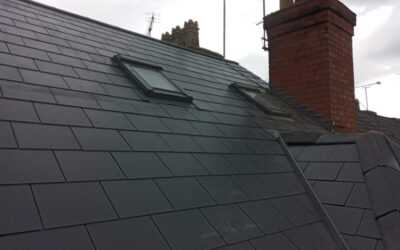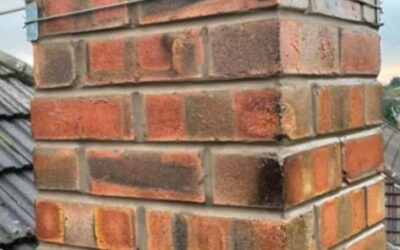Introduction to Dry Verge Systems
When considering the vast array of options for roofing solutions, the dry verge system emerges as a standout choice for homeowners and builders alike. But what exactly is dry verge? A dry verge system offers a method of mechanically fixing roof tiles or slates at the roof’s edge, eliminating the need for traditional sand and cement mortar. This innovative approach brings numerous benefits, including enhanced durability, improved aesthetic appeal, and reduced maintenance needs.
As we delve into the specifics of dry verge systems, it becomes clear why this option is gaining popularity in modern roofing. From its straightforward installation process to its superior resistance against the harshest weather conditions, the advantages of dry verge are manifold. This introduction aims to shed light on these benefits, allowing a deeper exploration of why dry verge systems have become a crucial component of contemporary roofing practices.
The Importance of Dry Verge Systems in Modern Roofing
The importance of durable and reliable roofing systems cannot be overstated in today’s rapidly changing climate. This is where the dry verge system plays a pivotal role. By offering a weatherproof solution that stands up to wind uplift and water ingress, dry verge systems ensure that homes are protected, come rain or shine. But why use dry verge over traditional methods?
The shift towards dry verge in modern roofing reflects a broader trend towards building materials and techniques that offer long-term sustainability and efficiency. Unlike mortar, which can crack and deteriorate over time, dry verge components are designed to last, requiring minimal maintenance and providing peace of mind to homeowners. Furthermore, the aesthetic versatility of dry verge systems allows for a seamless integration with a wide range of architectural styles, from the traditional to the contemporary.
How Dry Verge Systems Work
Understanding how dry verge works is crucial for anyone considering this roofing option. The system comprises a series of interlocking units that are attached directly to the roof battens. These units are designed to fit snugly over the edge of the roof tiles, creating a secure and weather-tight seal without the need for mortar.
Installation of a dry verge system is remarkably straightforward and often cited as a DIY-friendly project for those with some roofing knowledge. However, for optimal results and longevity, professional installation is recommended. The process involves:
- Preparing the roof edge.
- Aligning and fixing the dry verge units.
- Ensuring each piece is correctly interlocked provides maximum protection against the elements.
By combining innovative design with high-quality materials, dry verge systems offer a practical and effective solution to the challenges of roof edge protection. Whether constructing a new build or renovating an existing property, incorporating a dry verge system can significantly enhance your home’s durability, aesthetics, and value.
Comparing Dry Verge to Traditional Mortar Verge
When securing the edges of your roof, the debate between using a dry verge versus a traditional mortar verge is significant. While historically popular, traditional mortar presents challenges such as cracking, weathering, and a need for regular maintenance. On the other hand, the benefits of dry verge over mortar are compelling. Dry verge systems offer durability, ease of installation, and minimal maintenance, making them a superior choice for homeowners looking for a long-term roofing solution. This comparison of roofing techniques highlights the shift towards more innovative, reliable, and cost-effective solutions in the roofing industry.
Installation Process of Dry Verge Systems
Installing dry verge systems is straightforward and appealing to both professional roofers and enthusiastic DIYers. This process typically involves securing the dry verge units to the roof battens and ensuring each tile is neatly interlocked for maximum weather resistance. A comprehensive dry verge installation guide can assist homeowners in understanding the steps involved, from selecting the right components to completing the installation efficiently. For those considering a DIY dry verge installation, it’s crucial to follow manufacturer instructions closely to ensure optimal performance and longevity of the roofing system.
Maintaining Your Dry Verge System
Maintenance is a crucial aspect of ensuring the longevity of any roofing system. Fortunately, dry verge maintenance is minimal, primarily involving regular inspections to ensure the units remain securely fastened and debris-free. This ease of maintenance underscores the appeal of dry verge systems, allowing homeowners to enjoy the benefits of a well-protected roof without the constant upkeep associated with traditional mortar verges.
Common Misconceptions about Dry Verge Systems
Despite their growing popularity, several dry verge myths persist. Some homeowners may worry about dry verge systems’ durability or aesthetic compatibility with their homes. However, these misconceptions often stem from a lack of information. The truth about Dry Verge is that it offers a robust, weather-tight solution that can complement various architectural styles, debunking myths and reaffirming the system’s value and versatility.
Choosing the Right Dry Verge System for Your Home
Selecting the best dry verge system for your home involves considering factors such as the type of roof tiles, the architectural style of your home, and the local climate. With various dry-verge products on the market, homeowners should research and choose systems that boast a strong track record of performance and come from reputable manufacturers. This ensures that your investment enhances your home’s aesthetic appeal and protection.
The Cost-Benefit Analysis of Dry Verge Systems
When evaluating the cost of dry verge systems, it’s essential to consider the upfront installation expenses and the long-term savings in maintenance and potential repairs. Dry verge systems may present a higher initial investment than traditional mortar, but their durability, low maintenance requirements, and weather resistance can result in significant cost savings over time. This makes dry verge a worthwhile investment for homeowners seeking a reliable, low-maintenance roofing solution.
Conclusion: The Future of Roofing with Dry Verge Systems
As Hinckley Roofing looks towards the future of roofing, advancements in dry verge technology are setting new standards for durability, efficiency, and aesthetic flexibility. The shift towards these innovative systems reflects a broader trend towards building materials that offer long-term value and environmental sustainability. For homeowners and builders alike, choosing a dry verge system is a decision that aligns with the future of roofing—a future where efficiency, reliability, and aesthetic appeal go hand in hand. For further information, contact us on 01455 249579 or visit our Hinckley Roofing website.



